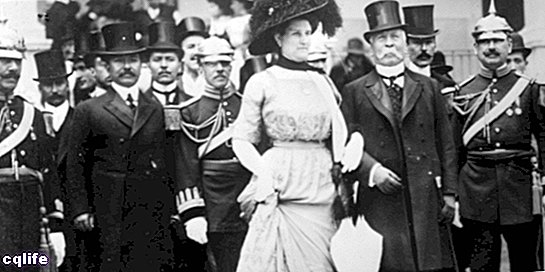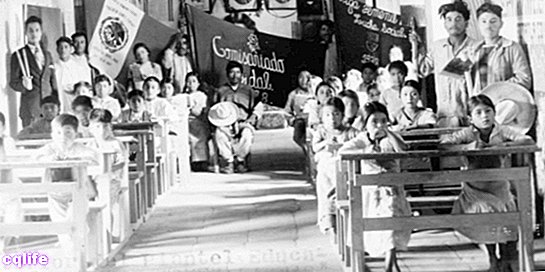- What is the Porfiriato?
- History of the Porfiriato
- Characteristics of the porfiriato
- Causes of porfiriato
- Culture during the Porfiriato
- Politics during the Porfiriato
- How long did the Porfiriato last?
We explain what the Porfiriato is, its history and the characteristics of this period. What were its causes, what was its culture and politics like.

What is the Porfiriato?
It is known as the porfiriato or porfirismo to a period in the political history of Mexico during which the nation It was under the iron and authoritarian control of the Oaxacan military man José de la Cruz Porfirio Díaz Mori (1830-1915). This period was key in the Mexican historical development, especially as a prelude to the famous Mexican Revolution, and lasted between November 28, 1876 and May 25, 1911: dates on which the leader Porfirio Díaz began his first presidential term and on which he left the can fleeing to France, respectively.
The Porfiriato was a particularly difficult stage in Mexican political life, since a single political leader ruled the nation with an iron fist. Even when the presidency of the nation was occupied for four years by another military man, General Manuel González, it was Porfirio Díaz who pulled the strings of power, openly retaking the mandate right away.
History of the Porfiriato

Porfirio Díaz had been a prominent military man during the Reform War (1858-1861) and the Second French Intervention in Mexico (1862-1867), especially in the latter, where he received honors as a hero after recovering Mexico City and Puebla from foreign rule. Thanks to this he had access to the politics, competing against Benito Juárez in 1867 and 1871, defeated on both occasions, and later also defeated by Sebastián Lerdo de Tejada, after the death de Juárez, against whom he rebelled militarily in a context of extreme unpopularity. Thanks to this coup He reached the presidency of the nation in 1876, and except for the five years in which Manuel González ruled nominally, he has been in charge of the government of Mexico since then.
The dictatorship de Díaz lasted 31 years. In his last days he reiterated that the country was already ready for the democracy, but he never made any real attempt to relinquish power. When in 1910, at the age of 80, he again presented his candidacy for the presidency, the discontent of these actions unleashed the rebellion of Francisco I. Madero on November 20 of that year, thus lighting the fuse of the coming Mexican Revolution. Having been defeated militarily and politically, Porfirio Díaz resigned the presidency the following year and left the country forever, thus ending the period of the porfirate.
Characteristics of the porfiriato
The porfirate was a dictatorship, and as such, it centralized power in the figure of Porfirio Díaz, whose will supplanted the guarantees established in the Constitution of the time, becoming the engine and steering wheel of the entire country. This was possible because he was extremely popular among the military class, so he reformed the army at will and subordinated them to the federal police and a rural police with which he maintained order throughout the country. This did not prevent rebellions, uprisings, protests and conflicts, but none managed to shake the government.
The continuity of the Porfiriato was translated into a material boom, the result of considerable advances in the economic field, the result of the opening to foreign investment and the liquidation of idle lands, sold to the highest bidder, generally to those who least needed them. . Crops (coffee, sugar, cotton) increased considerably, although not as much as mining activity (iron, copper, lead) and oil exploitation. At the same time, the government insisted on modernizing the country, investing in public works and expanding the railway network, for example, whose dimensions reached 23,000 km (compared to 617 km in 1876).
Causes of porfiriato
The main cause of the Porfirio Díaz regime was the Tuxtepec Rebellion of 1876, in which the caudillo opposed the reelection of Sebastián Lerdo de Tejada, motivated in part by the frustrations accumulated by Díaz in his successive electoral defeats, as well as by the reigning unpopularity of President Lerdo, derived from the seizure of power by Juárez and his followers during the reinstatement of the Republic.
Culture during the Porfiriato

During the Porfiriato in Mexico a positivist philosophy ruled, which stimulated the study of history, in part as a discourse that allowed national union. Díaz and González invested enormously in the education national, in very modern terms: secular, free and compulsory, as established by the Regulatory Law of Education promulgated in 1891. The law was also presented to create the National University of Mexico, moving away from the influence of the Catholic Church and the Royal and Pontifical University of Mexico, considered a viceregal symbol. Many of these changes were actually deepening of the previous administration of Benito Juárez.
The literature it was one of the Arts privileged during the Porfiriato. The foundation of the Liceo Miguel Hidalgo was, in this sense, decisive for the formation of young authors, influenced by the Romanticism. In addition, in 1867 the "Literary Evenings" had begun to be established, which were groups of writers with a draft common aesthetic, such as Guillermo Prieto, Manuel Payno, Ignacio Ramírez, Vicente Riva Palacio, Luis G. Urbina, Justo Sierra and Juan de Dios Peza.
On the other hand, the Teatro Chico Mexicano appeared, a form of theater popular that, along with muralism, would play an important role in the times of the Mexican Revolution.
Politics during the Porfiriato
As we have said, politics during the Porfiriato was a complicated issue, centered on the will of the dictator and his alliance with the military. Despite the fact that his arrival to power had taken place within the framework of an uprising against the reelection of Lerdo, in 1890 the Díaz government abolished all limitations on indefinite reelection, which was not well received by the sectors that opposed him.
Repression was a common weapon of the Condition in those days, especially in the period from 1890 to 1908, in which his centralism, paternalism and authoritarianism were accentuated, all in favor of the forced pacification of the country.
The foreign policy of the Porfiriato always sought the recognition of foreign entities, being the last to admit its mandate Great Britain, since Mexico had broken diplomatic relations with many of them during the signing of the London Convention, which caused the war intervention. Interestingly, the capitals British and American were the most abundant in the investment foreign during the Porfiriato.
How long did the Porfiriato last?
The Porfirio Díaz regime began in 1876 and formally culminated with his resignation in 1911. In total, the caudillo formally lasted 31 years in power and 35 directing the destiny of Mexico, 5 of which corresponded to the puppet government of Manuel González.
